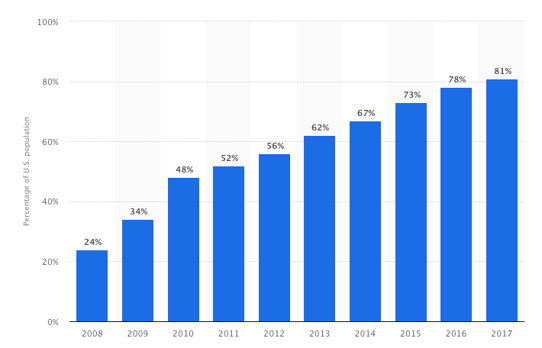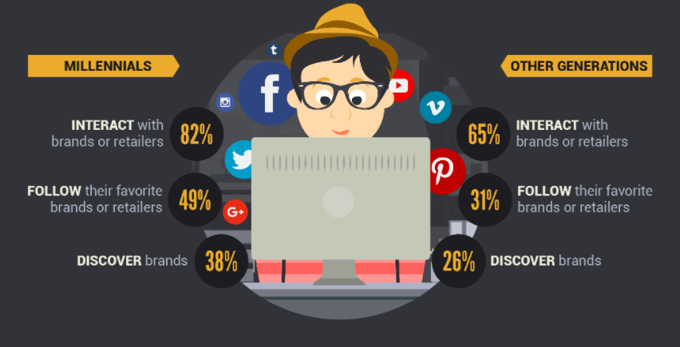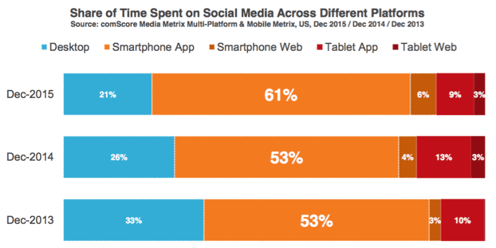Thanks to the rise of social media and mobile devices, brands can now leverage online qualitative tools to gather the accurate data they need—quickly and affordably.
Key Takeaways:
- Qualitative research provides incredibly valuable data to answer the "why" questions and help teams optimize solutions. But it has historically been expensive and time-consuming.
- Consumer behavior has changed thanks to rise of the internet, social media and mobile devices, enabling newer and better ways to conduct qualitative research.
- Now, companies can leverage online qualitative research to get the data they need to inform their decisions—saving teams valuable time and resources.
For years, when developing new products or designing new campaigns, companies were primarily interested in how customers felt about certain things. They’d conduct qualitative research in the form of in-person focus groups, for example, to see whether a customer preferred green packaging or blue packaging. Armed with that data—which was quite difficult and expensive to obtain—they’d then adjust their products accordingly before releasing them to the general public.
For the most part, companies wouldn’t take their research further and really dig down to find out why customers felt the way they did. That wasn’t because brands weren’t interested in that information. It was mostly due to the fact that it cost a lot of money to uncover the context behind what influenced consumer preferences and behaviors.
Unfortunately, when companies don’t understand what makes consumers tick, they’re likely to miss out on major opportunities. On one end of the spectrum, that may mean losing some sales revenue. On the other end, it may mean misreading the market entirely and making the wrong decision—costing the organization untold sums of cash.
But as technology continues to evolve, the nature of qualitative research is changing. Rather than simply looking at the top of mind thoughts and feelings of consumers, forward-thinking companies are increasingly interested in uncovering the context behind what’s influencing buyers’ decisions, and collaborating with them to build better products and services.
In large part, this is due to the evolution of the internet and the proliferation of technology—like smartphones, tablets and laptops. Together, both technology and the internet—and social media in particular—have joined forces to change consumer behavior.
It’s now easier than ever—and more affordable than ever—for brands to leverage technology to conduct online qualitative research that goes beyond a focus group or survey. Thanks to modern online qualitative solutions, companies can now leverage online discussions, and in-context sharing with photos and video to get access to the accurate qualitative data they need quickly and affordably. This information can guide their future decisions—ensuring that more value is delivered to customers and that costly missteps are kept to a minimum, if not eliminated altogether. Check out our whitepaper to learn more about how Qualitative Research is Changing!

[Download: Qualitative Research Is Changing]
Social Media: A Qualitative Game-Changer
Social media, in its current iteration, has essentially been around for a little more than a decade. During that time, it’s moved from relative obscurity to widespread adoption. In 2008, for example, 24% of Americans had a social media profile. By 2017, that number had exploded to an impressive 81%.

[Statista: Percentage of U.S. Population With a Social Media Profile From 2008 to 2017]
As more and more consumers have set up shop on various social channels, brands have followed them and done the same. The combination of social media and feature-rich mobile devices has made it easier than ever for companies to interact with both their customers and their potential customers—and turn those engagements into revenue-generating opportunities. Smart companies understand how important this potential is, which is why they tend to have robust presences on several popular social media channels (e.g., Facebook, Twitter, Snapchat and Instagram).
Today, customers engage directly with brands on the social media platforms they spend their time on—a win-win for both companies and consumers alike. In fact, 82% of millennials have already reached out to brands on social channels; so have 65% of customers from other generations. Suffice it to say that the average consumer is becoming increasingly comfortable with the idea of engaging with brands online. When it comes to giving feedback, many customers already prefer using social channels over any other medium.

[USC Dornsife: Psychology of Successfully Marketing to Millennials]
All of this means that, if they haven’t done so already, companies have an opportunity to engage with consumers in social media-style settings to inform the marketing plans and develop new products. Social media platforms have a tremendous amount of information about their users and can make it easy for brands to micro-target their unique audiences for research purposes. And specialized online qualitative research tools can enable brands to not only quickly recruit qualiative participants, but also capture proprietary insights in a more enjoyable and engaging social media-style setting.
Mobile and Social Go Hand-in-Hand
One of the reasons social media has become so popular is because mobile devices—and the 4G and 5G networks that feed them information—have become so powerful.
Social and mobile use go hand-in-hand; nearly 80% of all social media use occurs on mobile devices.

[Marketing Land: Nearly 80 Percent of Social Media Time Now Spent On Mobile Devices]
This is another area where online qualitative solutions enter the equation. Mobile apps and tools combined with social media makes it easier, cheaper and quicker for brands to collect online qualitative research from their target demographics. This makes perfect sense: If customers are already engaging with their favorite brands online on social platforms, it’s not hard to imagine them filling out a brief survey for something like a $10 gift card in order to provide honest feedback to the companies they care about the most.
One of the major downsides of in-person research is that participants often hesitate to give honest and direct feedback. They don’t want to say something that they perceive will hurt the researcher’s feelings. On the flipside, people are much more honest online. This is due to the fact that they aren’t face-to-face with someone and don’t feel as much pressure posting something from the comfort of their home (or wherever they happen to be). By conducting qualitative research online, companies not only get more accurate and insightful data—they also save a ton of money because research participants are always just a few clicks away. Compare that to having to put together groups of willing participants from all around the country to conduct an in-person focus group.
What’s more, participants in online research are able to give companies more contextual information—like photos and videos—that provide deeper insights into why they feel certain ways. This results in even stronger data that simply cannot be gleaned from old-fashioned qualitative research methods.
By now, you’re thinking that this all sounds great—but you’re wondering what you can do to get started.
Don’t sweat it: We’ve got you covered.
Digsite’s automated technology—combined with social media and mobile—makes it incredibly simple for you to generate actionable data quickly and inexpensively. That data can then be leveraged to inform your future products and marketing campaigns.
To learn more about how Digsite can help your company leverage this major shift in consumer behavior to get to the next level, check out our whitepaper!





